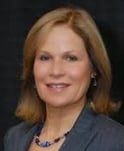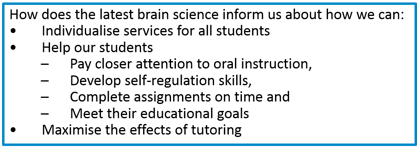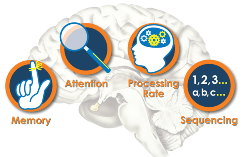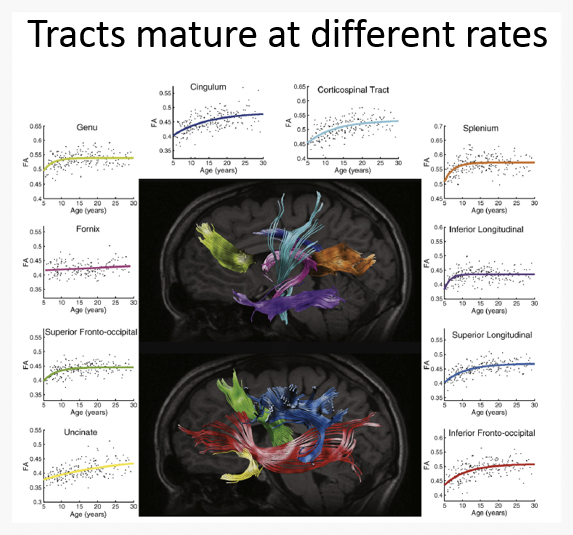
"How are the brains of different children different? Not all dyslexic children are the same. Not all children on the autism spectrum are the same. As a matter of fact, there are probably as many different kinds of autism as there are children with autism spectrum disorders", said Dr Martha Burns in a recent presentation.
Dr Martha Burns is a neuroscientist, author of over 100 journal articles and multiple books, and a leading expert on how children learn
Here is a summary of a recent presentation she did on the neuroscience of learning at a conference in Tuscon, USA:
"There's now a huge amount of research in neuroscience which is helping us deliver better education outcomes for students of all abilities. There are 3 keys we now know that are vital for delivering education.
1. Different brains mature differently
2. Because every brain is different, we need to teach differently to every student
3. Fast ForWord exercises drive brain maturation

We know from brain science that different brains mature differently. And one of the main things that differentiates a student with auditory processing disorder, or a student with autism spectrum disorder, or with dyslexia from a typically developing student is that their brain is maturing differently.
The “how” of learning
Self-control and self-regulation are the how of learning. You can have all the content you want - from the curriculum or from educational technologies such as Fast ForWord. You can go to any school that uses that program, for example, and say, 'Look at the vocabulary these exercises have, look at the skills they build.'
 But the big neuroscience part of this program isn't what's in it, it's how children learn. How they pay attention to the teacher. How they stick with a task and finish it. And that's the how of learning that is the neuroscience that's embedded in every single exercise. It’s also important in the Reading Assistant online reading tutor.
But the big neuroscience part of this program isn't what's in it, it's how children learn. How they pay attention to the teacher. How they stick with a task and finish it. And that's the how of learning that is the neuroscience that's embedded in every single exercise. It’s also important in the Reading Assistant online reading tutor.
And then individualising it for each student. The big change now in the United States in Special Education but huge in neuroscience is the recognition that every brain is different. And you have to teach differently to every student. So how do you understand those differences?
Neuroscience from 1963 to now
So here is my review. When we started in neuroscience, when I first began and took my courses a long time ago, don't do the maths, but it was 1963 when I took my first neurology course, this is what we learned. We learned that the brain was divided into all these places and that those places had a job. And there's been about 100 years of trying to figure out what the job of each of these places was.
With Michael Merzenich, with Bill Jenkins, with Steve Miller, (founding scientists of the Fast ForWord program), there was a huge change in that approach. Instead of trying to figure out what each place did, what we started doing was looking at the brain like your cellphone. That it has networks, that it has different components to it.
And that these regions, if this is going to work well, if you are going to do something like a mathematical computation, all of these regions have to cooperate together.
And just like your cellphone, your mobile, if one of the regions has poor reception, the whole system goes down. So what the brain exercises developed by Dr Merzenich and his colleagues were designed to do is to make sure the entire system, or what we call networks, had full integrity.
That you didn't have to say, 'Can you hear me now?' and move over there. But you had a brain where these networks could function. And the way that those functions developed, the way that those regions communicate with each other, is through these long fibre tracts.
Whenever you see dots on any scan here that are lining up together on an fMRI, we know that there are long fibre tracts that are connecting them together. Those fibre tracts have to develop, you are not born with them.
Brain maturation - you are born with all the neurons but you have to develop long fibre tracts
That's the key. That's what brain maturation is. Brain maturation isn't the development of neurons. You are born with all the neurons that you are ever going to have. I don't know if you know that but you are born with them. You only get a small percentage of neurons from the day you are born to the day you die and you lose more than you get.

So these are there. These regions are there but they are not connected. So the key to processing information is, are the regions connected? Just like the key to communicating back to Ireland is, is their cellphone or is their mobile getting the proper signal?
We've got to have these long fibre tracts mature. It takes years for them to mature and they mature differently depending upon your genes and depending upon your experiences.
Axons, neurons & dendrites
Now these fibre tracts are called axons. Axons are the fibres that extend from a neuron and carry information. So they are sending information to another neuron, which is going to pick it up with a little finger, with a dendrite. You are growing dendrites all the time. You are myelinating these axons all the time. That's brain maturation, that's brain plasticity.
So when we talk about neuroplasticity, which is what Fast ForWord was designed to drive, we are talking about two things. Myelinating and growing fibre tracts and fingers reaching out to grab on to those fibre tracts to get the information.
Those are continuing to change throughout your life. And there is a great paper that was published in the journal Science. This is just how white matter is driven and the way white matter is driven is what you all know, intensity and frequency of stimulation. The more you do something and the more intensely you do it, and the more you re-enforce for doing it, the thicker the myelin gets.
Myelin – the pavement on the highways of the brain
Now myelin is the pavement on the highways of the brain. Thicker the myelin, the faster the information goes.
That's processing speed. So if you are building myelin, you are not just building highways, you are also making them faster and more efficient.
And that's the goal of the neuroscientist. It isn't just to teach a vocabulary word but to enable you to get to it faster and more efficiently. Not be distracted. It's building the capacity to learn, building learning capacity.
Teachers build fibre tracts in their students' brains
Now, these are the major fibre tracts, some of them, of the brain. Often when I speak to teachers I say, 'this is the fibre tract that teachers build' because this is the fibre tract in the left hemisphere that is all about reading and maths. This is the fibre tract that develops throughout, up until our 30s and 40s that's about self-control and perseverance and goal setting and being able to get your job done efficiently.
It turns out Fast ForWord drives this and so does Reading Assistant. They were developed to drive brain maturation in the ways that are typical of normally learning students. So it is important to understand that.
Now, Dr Paula Tallal presented this research several years ago and was at University of Montreal and actually did studies of children. This is called DTI where you are actually looking at the thickness of myelin. And she did studies of people from five to 30 years of age and did DTIs longitudinally.
It was an amazing study to see how the fibre tracts mature. And what you can see is some of the fibre tracts like here is the one that I say the teachers build.
If you actually go over to this one, she started at five. So the curve is starting younger, but this is reading and maths and you can see it corresponds almost perfectly with the years of formal education in every country in the world.
You start teaching reading at five, you start teaching maths at five, you finish around 16, 17 years of age and then people choose an occupation and then you teach them what their occupation is.
Learning disability
Now, what we are all starting to learn is that when you have a learning disability, it doesn't matter whether it's autism spectrum disorder, dyslexia, auditory processing disorder, the difference is in the maturation. And a large part of it is the maturation of these fibre tracts.
Related Posts
5 Essentials for Effective Neuroscience Learning Capacity Programs
How Auditory Processing Disorder & Dyslexia are Related
Dyslexia in Children - The Brain of a Struggling Reader
What’s the Latest in Neuroscience, Working Memory, Attention & Autism?




